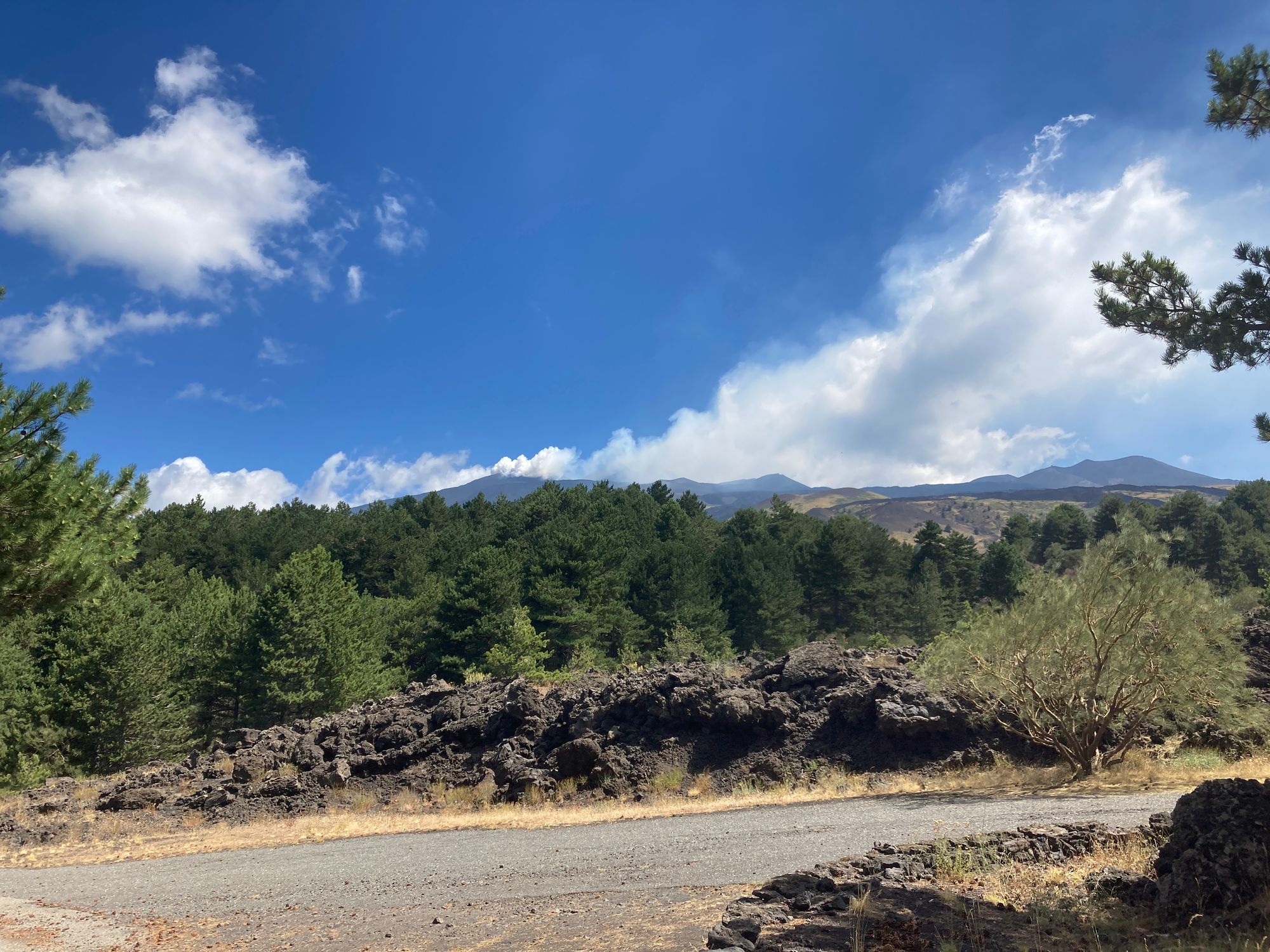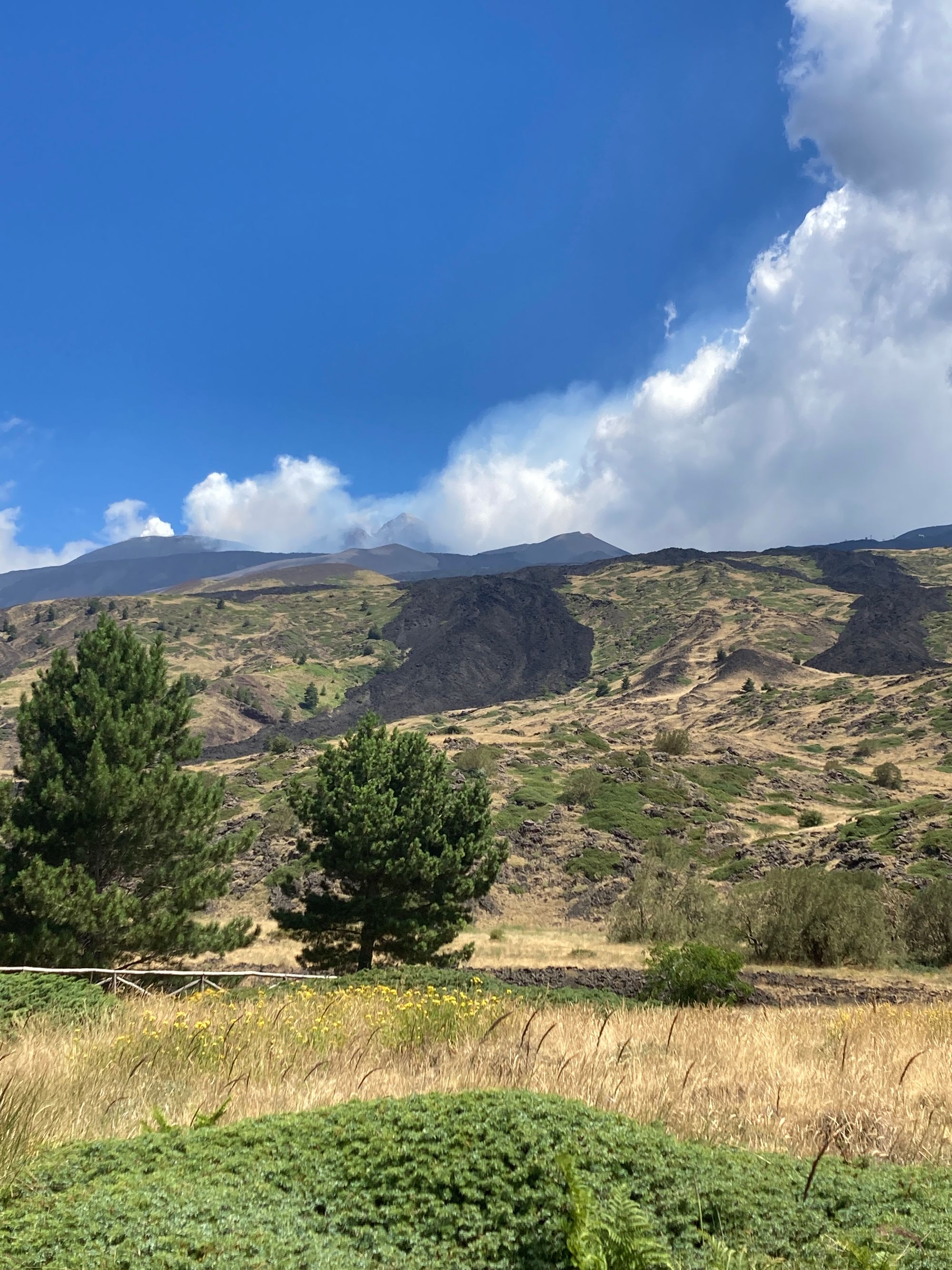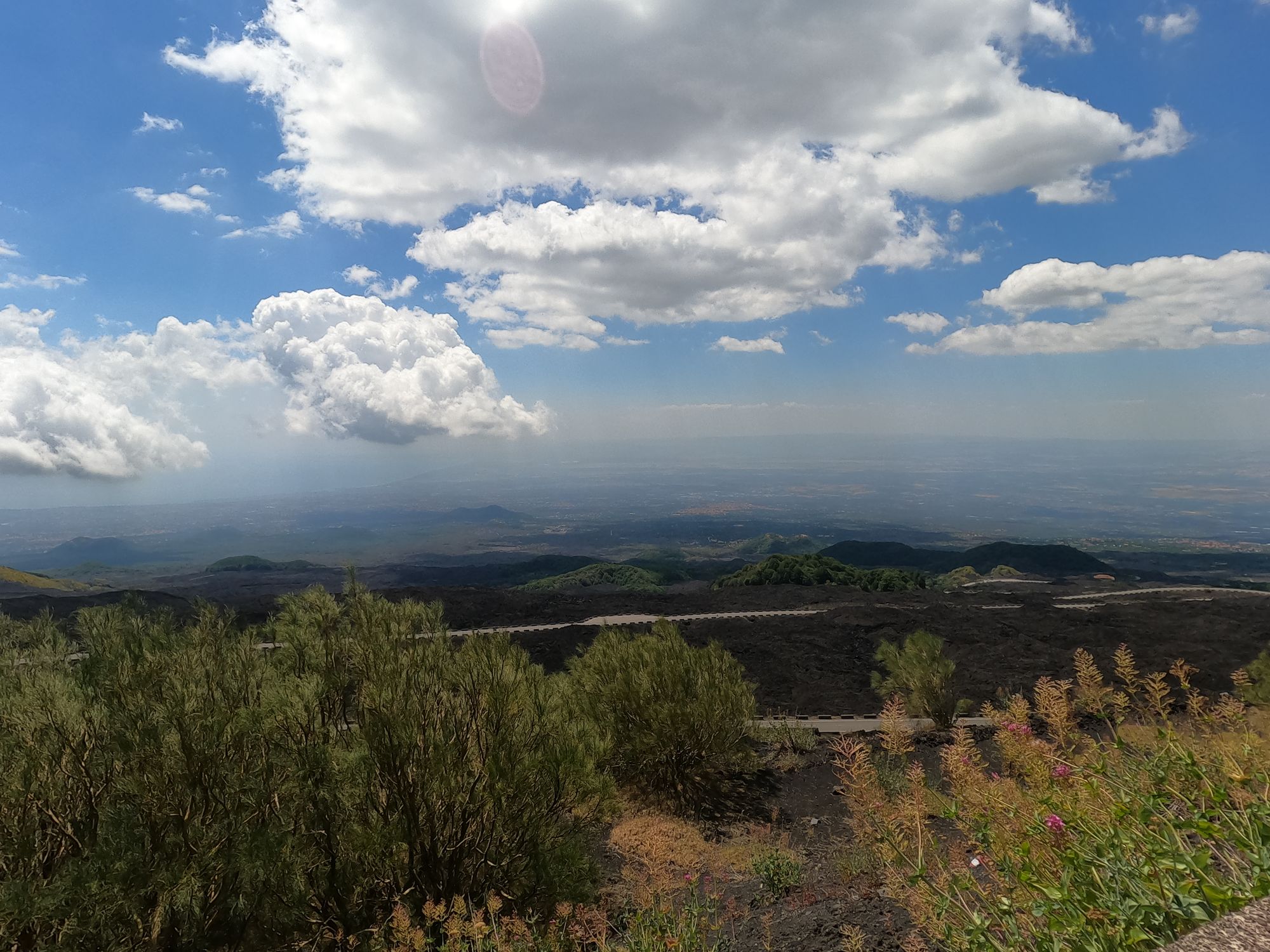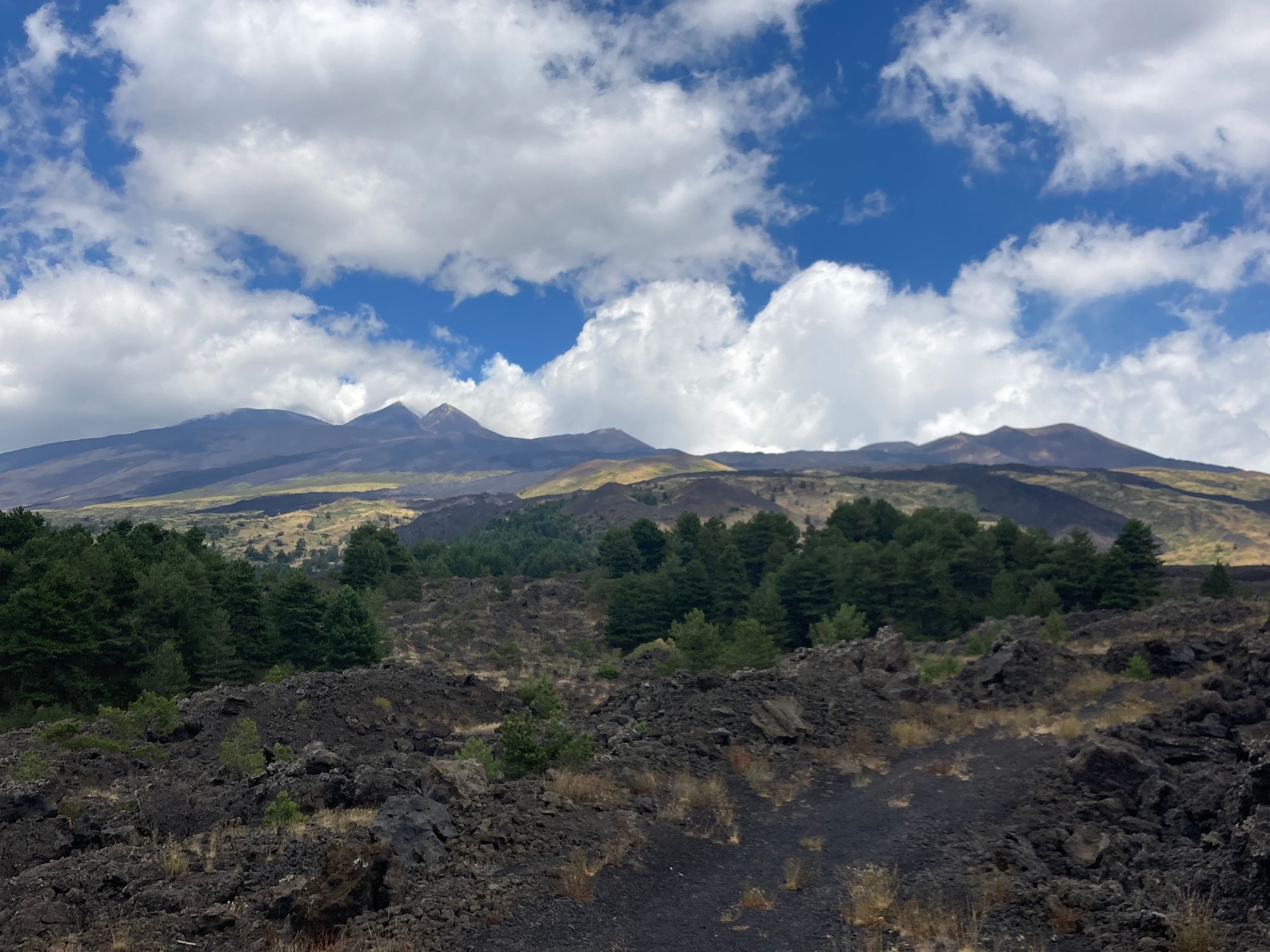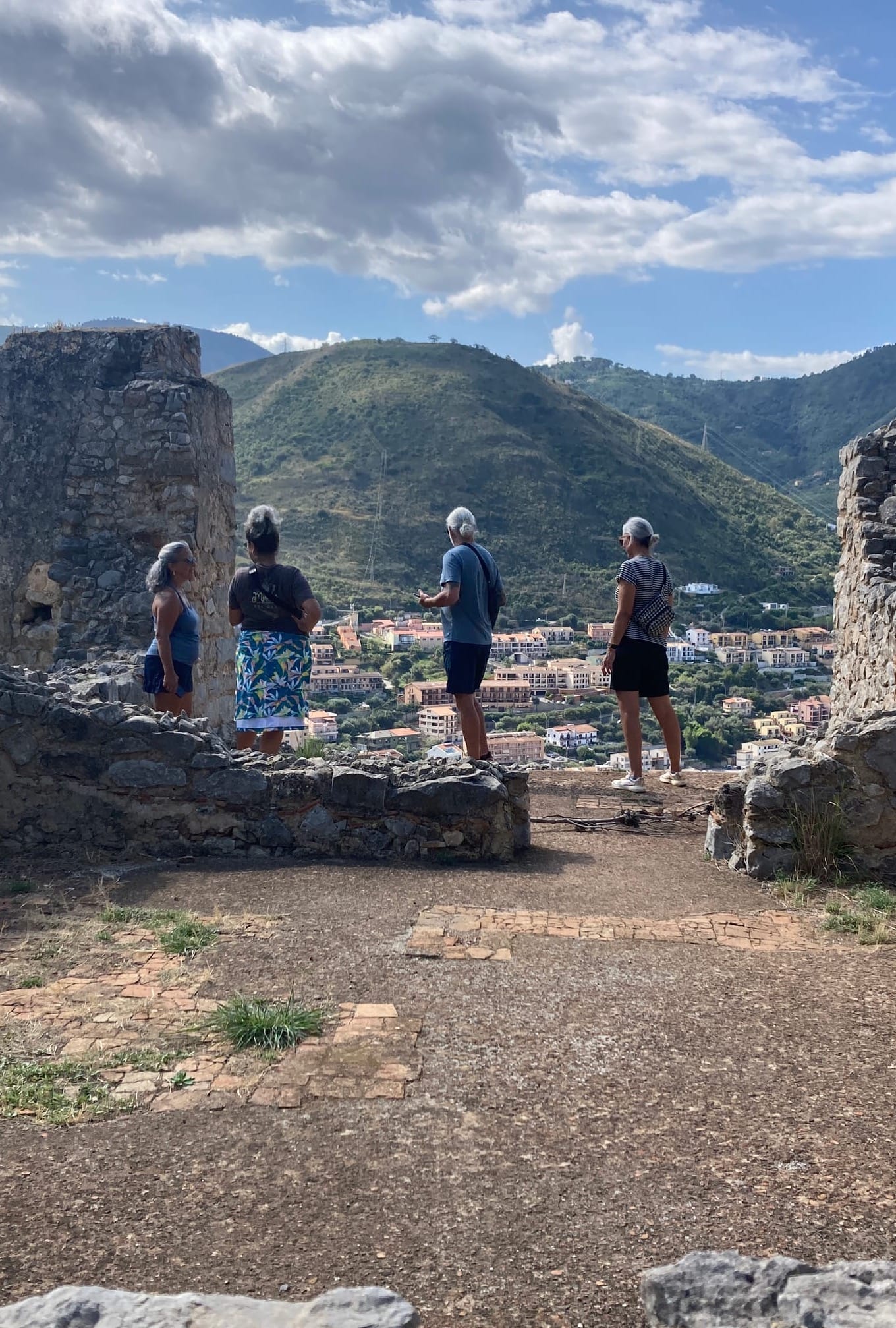
Montebello
Mount Etna, or Montebello (beautiful mountain), as it is known throughout Italy—Muncibbeḍḍu in Sicilian for those wondering—is one of the tallest active volcanoes in Europe with the height as of July 2021 measured at 3,357 m (11,014 ft), though this varies with summit eruptions.
It is one of the most active volcanoes in the world (which is healthy for a volcano) providing fertile volcanic soil to support extensive agriculture (even better for people) with vineyards and orchards spread across the lower slopes of the mountain and throughout the plains of Catania to the south. Over 25% of Sicily's population lives on Etna's slopes and it is the main source of income for the island, both from tourism and agriculture.
Most of the eruptions on Etna occur at the summit, where there are five distinct craters. These types of eruptions can be highly explosive and spectacular but rarely threaten the inhabited areas around the volcano. Other eruptions occur on the flanks, which have hundreds of vents, many hundreds of meters wide, some of which are located within inhabited areas, making them especially dangerous. Since the year 2000 Etna has had only four flank eruptions – in 2001, 2002–2003, 2004–2005, and 2008–2009. Summit eruptions have occurred in 6 years of those twenty.
The first volcanic activity is believed to have taken place about 500,000 years ago, with many more lava flows following. Some thousand years ago, the eastern flank of the mountain experienced a catastrophic collapse, generating an enormous landslide, which left a large depression in the side of the volcano, known as 'Valle del Bove' (Valley of the Ox, pictured here), causing a huge tsunami which affected several shores along the eastern Mediterranean.
For most of mankind, Mount Etna has been a source of wonder, legend and myth. One of the most famous of these is the story of Ulysses, the hero of the Trojan War, who stopped in Sicily on this return home, where he encountered the Cyclops, Polyphemus, in his cave. Polyphemus, feeling threatened, imprisoned the travelers and began killing Ulysses’ men. Ulysses got the Cyclops drunk and during the night blinded him with a wooden stake. As they fled cave, Polyphemus, embarrassed and full of rage, threw giant volcanic rocks towards the sea at the fleeing men. These rocks now define the coastline of Aci Trezzo, a fishermen village near Catania.
Whether legend or truth, if there is one thing certain about Mount Etna it is that if the inside looks like hell, the outside is the nearest thing to paradise.
Don't believe me?
See for yourself!
